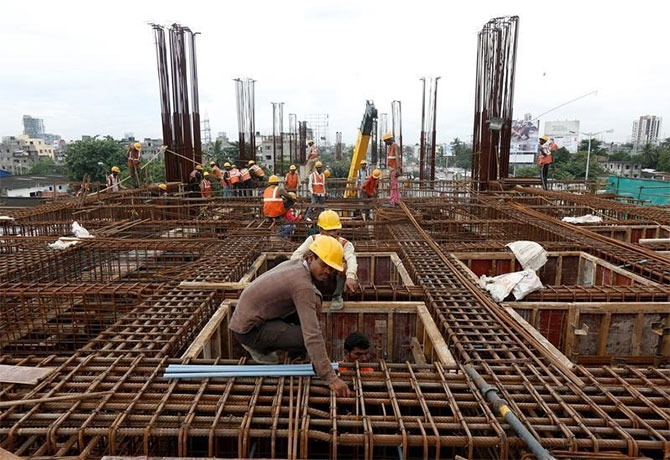India’s Infrastructure Investments: A Growth Multiplier War Chest.
4 min read
Infrastructure has fundamentally proven its metal when it comes to supporting other industries, providing jobs to thousands, highlighting the worth of a political state model, and above all creating long-term assets. Infrastructure has also been the highest capital receiver in 2021, and InvITs continue to be the most favored investment vehicle for sponsors and global investors. InvITs have received >$10 billion of investments in the last couple of years, with investments from some of the largest global fund houses.
The roads regulator of India (NHAI) has also launched its maiden InvIT – with an estimated value of >$1.1 Bn and received participation from large pension funds (CPPIB and OTPP). KKR has sponsored another InvIT in the renewables space (Virescent Infrastructure).
Coronavirus pandemic may have temporarily stalled economic activities, but it is the importance of infrastructure that helped in revival and also raised hopes for 9% GDP growth.
So, what has been India’s story with infrastructure?
- The 2nd Five Year Plan till 1961 was introduced. Beginning of focus on investments, and planning for infrastructure development, and rapid industrialization.
- Allotted funds Rs. 48 billion.
- Increase in coal production and addition of railway lines. But the targets were never met, with a projection of 4.5% growth the plan only measured a growth rate of 4.2%.
The Vajpayee Touch:
- Worth $4.1 billion India’s most popular The Golden Quadrilateral connected highways between four top metropolitan cities.
- Measured in 49% overall output from the initial level.
- Grameen Sadak Yojana (PMGSY): contribution to infrastructure development in rural areas.

Narendra Modi: Vajpayee on steroids
PM Modi’s illustrious career as Gujarat CM armed with Gujarat Development Model stands testimony to the fact that PM Modi believes in infrastructures for a better India. As per the Department for Promotion of Industry and Internal Trade (DPIIT), FDIs in infrastructure were US$ 26.14 billion and US$ 25.38 billion, respectively, between April 2000 and June 2021.
13% total FDI inflows of US$ 81.72 billion in FY21. Now, India is on its way to becoming the world’s 3rd largest infrastructure hub. India also plans for a total investment of $800 billion by 2022 across infra domains. Launch of multi-modal connectivity with the goal of developing infrastructure to reduce logistic costs. The plan is worth Rs. 100 lakh crores.
National Bank for Financing infrastructure and development set up to fund infrastructure projects. India has planned an investment of $750 billion for railways infrastructure from 2018-30. A Quadrilateral Economic forum between India, US, UAE, and Israel has been set up to focus on bilateral infrastructure projects. India and Japan have joined hands for infrastructure development in India’s Northeast states and are also setting up an India-Japan Corridor, a response to Chinese expansionist measures
Budget 2021: At a Glance
- Allotted US$ 32.02 billion to enhance the transport.
- National Infrastructure Pipeline (NIP) expanded to 7,400 projects.
- $15 billion worth of projects completed in 2020.
- Invested US$ 1.4 trillion in infrastructure development as of July 2021.
The Government of India has about 30+ policies, schemes, and partnerships in the pipeline for India’s infrastructure story. In the coming years, India will transform the outlook of Indian infrastructure on the world map.
But the infrastructure is heavily dependent on funds. And the Government rightly did so by increasing the capital expenditure by 35% to Rs. 7.5 lakh crores.
Budget 2022 has prioritized the investment push in India’s infrastructure story. The plan aims at a massive investment in modern, transformative, and green infrastructure.
The budget for infrastructure plans to push a multi-modal approach for public utility, and logistical movement. The plan envisages a blanket of advancements on Roads, Railways, Airports, Ports, Mass Transport, Waterways, and Logistics Infrastructure under PM GatiShakti.
- A massive increase in the web of highways connecting rural areas, housing for all, tap water connections 25,000 km of expressways, and five river-linking projects.
- Allocation for the highways sector has increased to Rs 1.99 lakh crore from Rs 1.18 lakh crore from the previous year.
- FM also announced that Rs 20,000 crore will be mobilized to complement public resources.
- Allocation for the transport sector has gone up to Rs 3.5 lakh crore in 2022-23 from Rs 2.3 lakh crores from previous years.

Ultimately, India also needs a new class of infrastructure companies that are modeled as ‘modern utilities’. These can then access financial markets as the next generation of DFIs – to accompany any infrastructure stimulus from the government. Commerce and Industry Minister Piyush Goyal said that massive public spending on infrastructure will boost the private sector as well. “Investments in infrastructure have a multiplier effect of four times of the money spent. More money in infrastructure also means more jobs. Youth, in particular, will benefit a lot in terms of employment and new businesses.”
Written By: Deepanshu Bhat and Rony Saha



